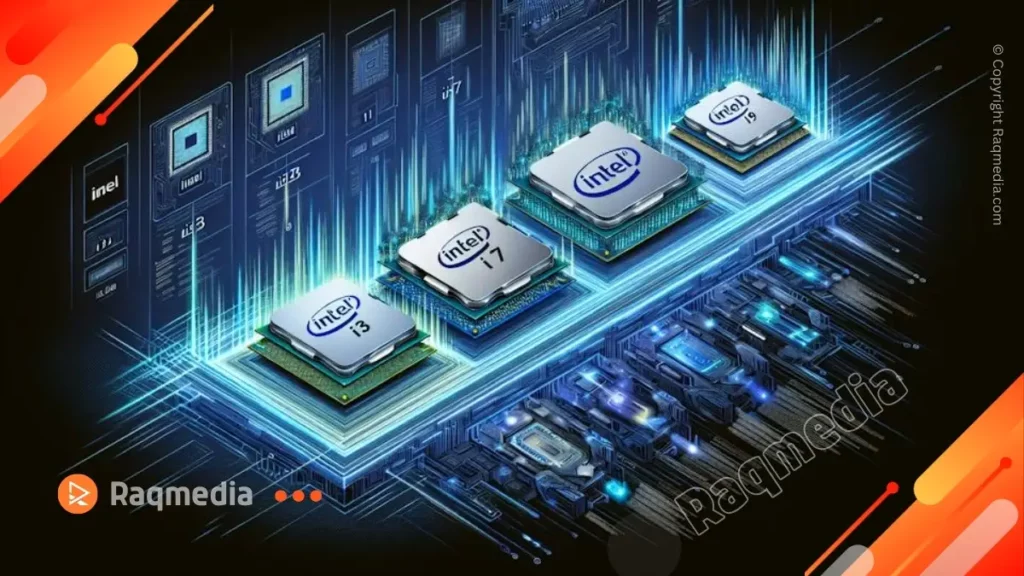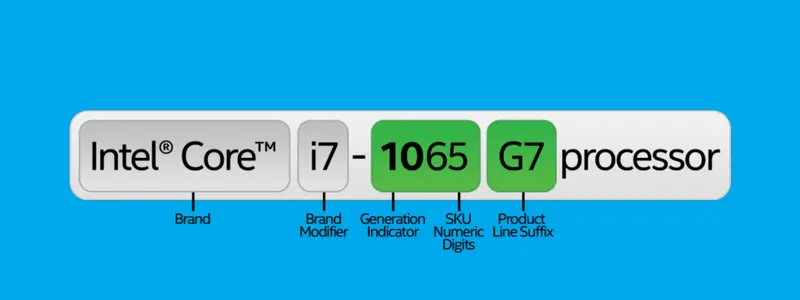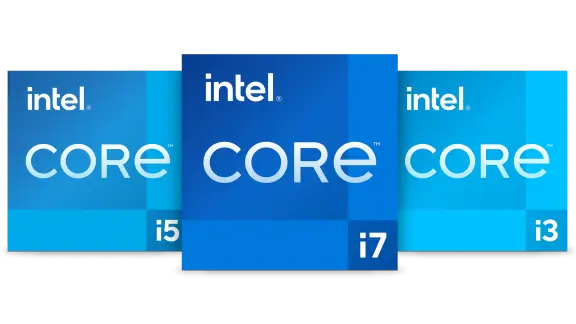Understanding the letters used in Intel processors is essential for making informed decisions when purchasing or building a computer. The letter at the end of an Intel processor model name carries specific meaning and indicates the features and capabilities of that particular CPU. For instance, K denotes an unlocked multiplier for overclocking potential, X represents extreme performance with higher core counts and overclocking abilities, while F signifies a lack of integrated graphics.
Table of Contents
- 1 Understanding Intel Processor Letter Meanings
- 2 History of Intel Processor Naming Scheme
- 3 Breakdown of Intel Processor Model Numbers
- 4 Intel Processor Letter Meanings Explained
- 5 Deciphering the Letter Meanings
- 6 The Significance of Intel Processors Letter Suffixes
- 7 Comparing Different Generations of Processors
- 8 Conclusion: Mastering the Intel Processor Naming System
- 9 FAQs
- 9.1 Q: What is the purpose of the letter meanings in Intel processors?
- 9.2 Q: What does the ‘i' stand for in Intel processors?
- 9.3 Q: What do the numbers after the ‘i' represent?
- 9.4 Q: What does the ‘K' or ‘X' at the end of a processor's model number mean?
- 9.5 Q: What is the difference between a U-series and an H-series Intel processor?
- 9.6 Q: What does the ‘F' stand for in an Intel processor model number?
- 9.7 Q: What is the significance of the ‘T' in some Intel processor model numbers?
- 9.8 Q: What is the difference between an Intel Core processor and an Intel Xeon processor?
- 9.9 Q: What does the ‘G' in an Intel processor model number mean?
Understanding Intel Processor Letter Meanings
When choosing between different Intel processor models, it's crucial to consider the implications of these letters on your system's overall performance and functionality. Being aware of their meanings allows users to tailor their CPU selection to best fit their computing needs. Moreover, understanding these designations can provide insight into future-compatible technologies that may be supported by certain processors, offering a glimpse into potential upgrade paths or enhancements.

By comprehending the significance behind Intel processor letterings, individuals can make more educated choices when selecting components for their systems, ensuring they meet both current and future requirements. This knowledge empowers users to optimize their computing experience by leveraging the right combination of features most beneficial to them, while also allowing them to plan for potential upgrades or changes in application requirements.
History of Intel Processor Naming Scheme
The history of Intel's processor naming scheme is a fascinating journey that reflects the evolution of computer technology. It all began with the 4004, Intel's first commercially available microprocessor, which set the stage for the naming conventions to come. Over the years, Intel has used a combination of letters and numbers to designate different aspects of their processors, from core count to generation.
One key turning point in this history was the introduction of the Core series in 2006, marking a shift towards more consumer-friendly branding. This move not only simplified the naming structure but also made it easier for users to understand and compare different processor models.

As technology continued to advance, Intel introduced additional modifiers like i3, i5, and i7, further refining their naming system to reflect performance tiers and target markets. Understanding this historical context provides valuable insight into how Intel's processor names have evolved over time and what they signify in terms of technological advancements.
Breakdown of Intel Processor Model Numbers
Understanding Intel processor model numbers can be a daunting task, but breaking down the system can provide valuable insights for consumers. Each letter and number in the model signifies important details about the processor's characteristics and capabilities. For example, the first digit of an Intel Core processor represents its generation, with higher numbers indicating newer models. The following letters further specify features such as power consumption, integrated graphics capabilities, and product line.
It's important to note that Intel has recently introduced a new naming convention for its processors, aligning them more closely with their intended market segment. This change aims to simplify the consumer experience by providing clearer distinctions between different product lines. As technology continues to evolve rapidly, understanding these model numbers is crucial for making informed purchasing decisions and getting the most out of your computing experience. By decoding these seemingly complex strings of characters, consumers can confidently choose the best Intel processor for their needs.
Intel Processor Letter Meanings Explained
| Letter | Meaning | Example | |
|---|---|---|---|
| i | Represents the processor class (Core series). | i7, i5, i3 | |
| X | Extreme Edition (higher performance variant). | i9-11900K, i7-6950X | |
| F | Indicates a processor without integrated GPU. | i9-9900KF, i5-11400F | |
| K | Unlocked multiplier for overclocking. | i9-10900K, i5-11600K | |
| S | Power-optimized, lower base frequency. | i7-10700S, i5-10400S | |
| H | High-performance graphics (laptop processors). | i7-9750H, i5-10300HU Ultra-low power, common in laptops. | |
| Y | Extremely low power for fanless devices. | i5-7Y54, m3-6Y30 | |
| T | Power-optimized, lower base frequency (desktop). | i9-10900T, i5-10400T | |
| C | Specialized for desktops with added security. | i9-10900KC, i5-10600K | |
| E | Embedded processors for industrial use. | i7-8850HE, i5-7300UE |
Deciphering the Letter Meanings
Deciphering the letter meanings in Intel processor model numbers can be akin to unraveling a fascinating code. Each letter holds a specific significance, indicating the unique features and capabilities of the processor. For example, K often denotes an unlocked multiplier for overclocking enthusiasts, while U commonly signifies an ultra-low power consumption variant ideal for laptops and other portable devices. By understanding these subtle nuances, consumers can make informed decisions tailored to their computing needs.

Furthermore, delving deeper into the letter meanings reveals the intricate balancing act between performance and efficiency. A single letter can dictate whether a processor is optimized for high-speed gaming, energy-efficient multitasking, or professional content creation. Unraveling these cryptic codes empowers users to select processors that align with their individual usage scenarios, harnessing the full potential of Intel's diverse lineup.
As we continue to decipher the hidden language behind processor model numbers, it becomes evident that each letter serves as a window into the technological prowess and versatility ingrained within these microchips.
In essence, parsing through Intel's alphabet soup of letters leads us down a riveting path filled with not just technical specifications, but also possibilities for customization and optimization. Deciphering these letters not only demystifies product naming conventions but also sheds light on how innovative engineering translates into real-world performance benefits.
The Significance of Intel Processors Letter Suffixes
The letter suffixes accompanying Intel processor model numbers hold significant weight in determining the specific features and capabilities of each chip. Take, for example, the K suffix, denoting an unlocked multiplier for easier overclocking, appealing to enthusiasts and gamers seeking maximum performance.
On the other hand, the U suffix signifies ultra-low power consumption, making these processors ideal for thin and light laptops where battery life is paramount. Understanding these letter suffixes empowers consumers to make informed decisions tailored to their specific needs, ensuring they get the most out of their computing experience.
Additionally, letter suffixes often signify a generational shift or a unique variant within a processor family. For instance, the F suffix denotes processors without integrated graphics—crucial information for those pairing with dedicated graphics cards or using applications that benefit from CPU resources instead. This valuable insight into Intel's nomenclature enriches our understanding of processors on a deeper level, enabling us to discern between seemingly similar models and make educated choices that align closely with our individual requirements.
Comparing Different Generations of Processors
When it comes to comparing different generations of processors, it's essential to understand the improvements and advancements that each generation brings. For instance, the Intel Core i7-2600K from the 2nd generation offered significant performance gains compared to its predecessor due to its enhanced architecture and higher clock speeds. Moving on to the 8th generation, processors like the Intel Core i7-8700K introduced more cores and threads, leading to improved multitasking capabilities and overall speed.

Moreover, with each new generation, we witness upgrades in power efficiency and integrated graphics performance. This is evident in the 11th generation Intel Core processors, which showcase impressive gains in both areas. Additionally, advancements in manufacturing technology have allowed for smaller transistor sizes and improved thermal characteristics.
These developments have resulted in significant boosts to processor performance while maintaining lower power consumption levels. Understanding these generational differences can help users make informed decisions when choosing a processor that aligns with their specific needs and usage scenarios.
Conclusion: Mastering the Intel Processor Naming System
In conclusion, mastering the Intel processor letter meanings can feel like decoding a complex puzzle, but it's a skill that can greatly benefit both tech enthusiasts and everyday consumers. Understanding the significance of the letters in Intel processor names allows you to make more informed decisions when purchasing or upgrading your devices.
Whether it's deciphering between different generations of processors or identifying specific features offered by each model, the knowledge gained from mastering the Intel processor naming system provides a valuable framework for navigating the ever-changing landscape of computer hardware.
Moreover, delving into the intricacies of processor naming conventions also offers an opportunity to appreciate the innovation and evolution driving technological advancements. It unveils Intel's commitment to enhancing performance, efficiency, and user experience with each new iteration. Embracing this understanding fosters a deeper appreciation for the remarkable ingenuity that goes into developing these essential components of modern computing technology.
Ultimately, by grasping the nuances of Intel processor names, individuals gain empowerment in making informed choices about their technology needs while also fostering an appreciation for ongoing advancements in the semiconductor industry.
FAQs
Q: What is the purpose of the letter meanings in Intel processors?
A: The letters in Intel processors represent different features and capabilities of the processor, allowing consumers to easily identify and compare different models.
Q: What does the ‘i' stand for in Intel processors?
A: The ‘i' stands for ‘Intel Core,' which is the brand name of Intel's mainstream processors.
Q: What do the numbers after the ‘i' represent?
A: The numbers after the ‘i' represent the generation or model number of the processor. For example, an Intel Core i7 is a higher-performing processor than an Intel Core i5.
Q: What does the ‘K' or ‘X' at the end of a processor's model number mean?
A: The ‘K' or ‘X' at the end of a processor's model number indicates that the processor is unlocked, meaning it can be overclocked for improved performance.
Q: What is the difference between a U-series and an H-series Intel processor?
A: U-series processors are designed for power efficiency and are typically found in laptops and ultrabooks, while H-series processors are higher performing and are often used in gaming laptops and desktops.
Q: What does the ‘F' stand for in an Intel processor model number?
A: The ‘F' stands for ‘fixed graphics,' indicating that the processor does not have integrated graphics and requires a separate graphics card.
Q: What is the significance of the ‘T' in some Intel processor model numbers?
A: The ‘T' stands for ‘thermal design power' (TDP), which is the maximum amount of heat generated by the processor that needs to be dissipated by the cooling system.
Q: What is the difference between an Intel Core processor and an Intel Xeon processor?
A: Intel Core processors are designed for consumer use, while Intel Xeon processors are designed for professional use in servers and workstations.
Q: What does the ‘G' in an Intel processor model number mean?
A: The ‘G' stands for ‘graphics,' indicating that the processor has integrated graphics and does not require a separate graphics card.










🌟 Dive into the ultimate guide to understanding Intel Processor Letter Meanings on RaQMedia! Unlock the secrets behind Intel’s naming conventions and make informed decisions when choosing your CPU! 💻🔍 Check it out here: https://www.raqmedia.com/intel-processor-letter-meanings/
.
👍 Don’t forget to follow and like for more insightful tech articles!
.
#raqmedia #IntelProcessor #TechExplained #ComputerHardware #CPU #TechnologyInsights #TechGuide #PCBuilding #TechSavvy